Last updated on January 9th, 2025
Featured image: The view of Mt. Etna from nearby Taormina, Sicily / Photo by SeanPavone via Envato
Day trips to some of Sicily’s most iconic landmarks
by Carolyn Ray
Two thousand years ago, a devout young woman named Agatha held steadfast to her virginity, refusing to marry. She was tortured, raped and killed by the Romans, had her breasts viciously ripped off with pinchers. As legend has it, a year later, in 252 A.D., Mt. Etna erupted, threatening the destruction of the city of Catania. Miraculously, the lava flow stopped when Agatha’s veil was placed on the side of the mountain by a priest.
When I arrive in Catania at the end of January 2024, this city of approximately 300,000 on the east side of Sicily is preparing for the Festival of St Agatha that runs every year from February 3 to 5. St Agatha is the patron saint of breast cancer patients, rape victims and wet nurses — and protection from fire. Red banners embellished with enormous capital ‘A’’s are mounted on every balcony. There are massive thrones in all of the churches, celebrations in the streets, and pastries shaped like breasts with red cherries in the middle. On my last night in Catania, I gather with thousands of people in front of the church, as if waiting for another miracle.
Catania is a busy tourist destination in the summer, but in the low season in January, there aren’t too many of us walking along the black volcanic brick streets. Mt. Etna looms in the distance, with a small plume of smoke dancing from the top. I’m staying at the Palazzo Natoli Boutique Hotel so it’s a direct walk into the historical centre. Once there, all of the famous sites are just a few minutes away, including the Catania Fish Market, A Putia Dell’Ostello, and Palazza degli Elefanti, the “Elephant’s Palace” or Town Hall.
Get stories like this delivered directly to your inbox – join the mailing list here!
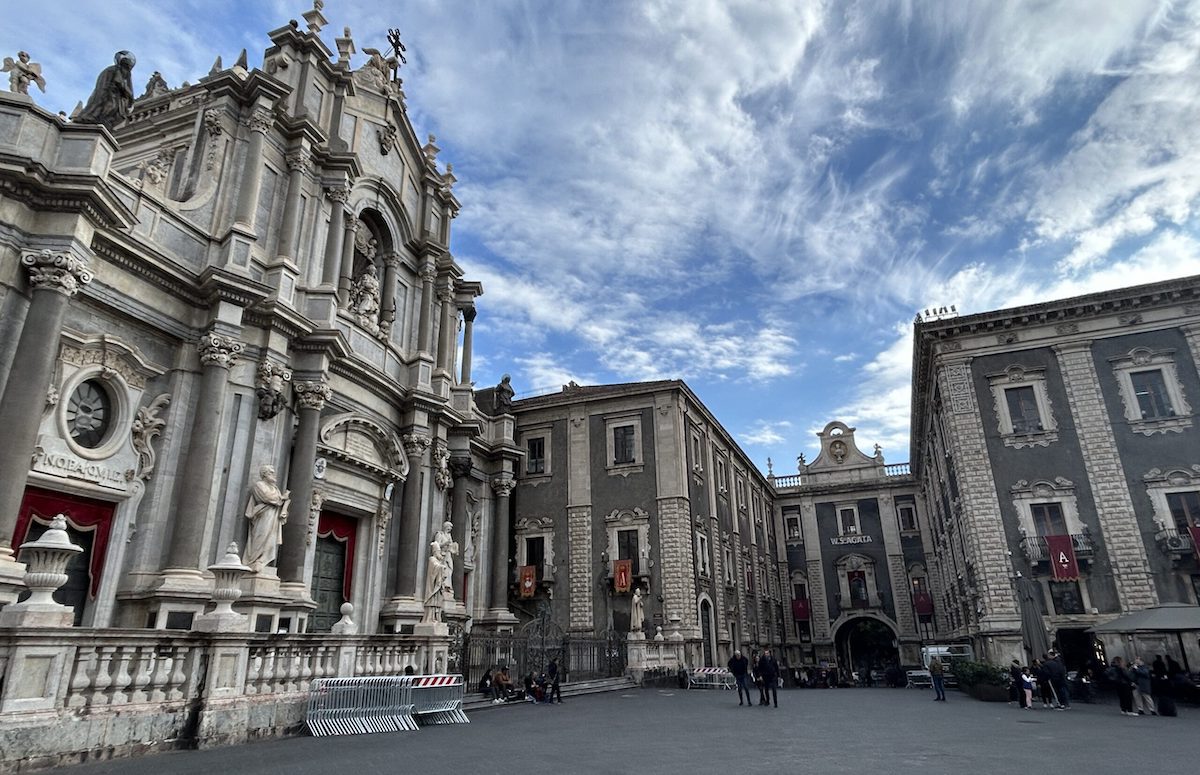
Catania’s main square and the Church of St. Agatha / Photo by Carolyn Ray
Five day trips from Catania
While Catania has its own charm, if I had to do it all over again, I would have stayed in Taormina or Ortigia. This was, after all, the advice I was given by travel advisor Angela Macaluso from Sicily by Experts, who arranged my travel, hotels and guides in Sicily to Catania and Palermo and knows the entire island inside out.
“Sicily is the island of Dolce and Gabbana, the cassata and cannoli, the arancine and much more delicacies, the mathematician Archimedes, the composer Bellini, the leopard by Giuseppe di Lampedusa and more,” Macaluso enthuses. “It’s the island with sandy beaches and clear waters but also rocky volcanic coastlines, where treasures of the ancient world sit next to theatrical baroque monuments. It’s where you can find great five-star luxury hotels and amazing boutique hotels, and an island of dreams and legends, with the fire of volcanos.”
1. Mount Etna, overlooking Catania
From my hotel rooftop, I gaze at Mt. Etna in the distance, excited about my upcoming hike. My guide Denys, who’s originally from Ukraine, has been in Sicily for 17 years. As we watch the small plumes of smoke from the top of Mt. Etna, he explains that while eruptions can be predicted, there’s no way to anticipate the magnitude of them, as we do with hurricanes. He pulls out his cell phone and shows me a video of sandy, black ash from a recent eruption from December 2023. With Etna erupting now, in July 2024, I can only imagine what videos he would have.
After lunch at Chalet Clan dei Ragazzi, we hike up one of the four craters on Mt. Etna, where the path of lava is evident. There is no wildlife here, only small bushes and wild fennel growing along the roadside. Denys also takes me into lava tunnels and caves, explaining that many Sicilians became wealthy in the 1700s by storing ice here. Sicily’s best coffee, wine and pistachios are grown in this volcanic soil. When I ask him about the best time to come to Catania, he says ‘Don’t come in July and August – too many Italians!’ with a laugh. Find a tour of Mt. Etna here!
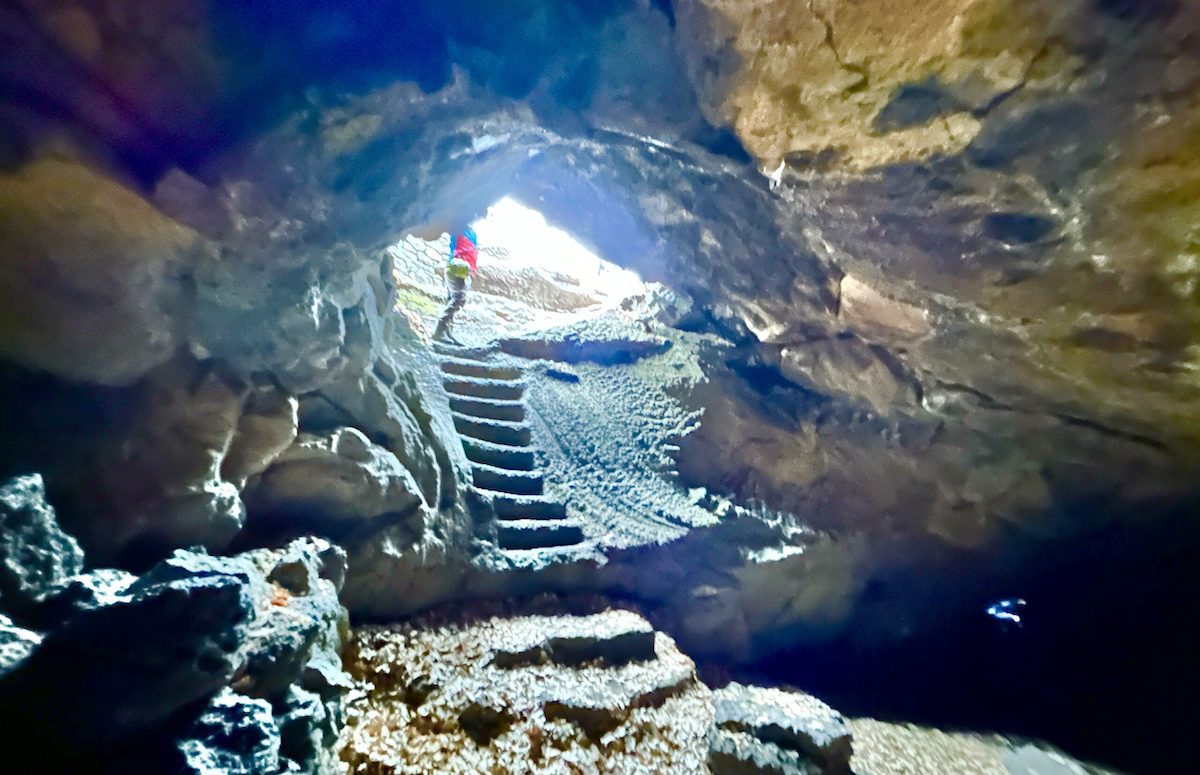
Lava caves at Mt. Etna’s / Photo credit Carolyn Ray
2. Taormina, an ancient hillside village
If there’s ever a place I would have loved to live 2,000 years ago, it’s Taormina, with its incredible Greek amphitheatre, Porta Messina and views of Mt Etna.
Taormina is undeniably the most picturesque town I’ve seen in Sicily. It’s just a short train ride from Catania, with breathtaking views of the ocean and Mt. Etna. I can only imagine sitting in its Greek Theatre in the third century, with the volcano in the background. It has the second largest amphitheatre in Sicily and is a must-see town for anyone traveling to Sicily.
From Catania, it’s a short train ride along the coast for €6. Simply walk outside the train station and get on the bus up the hill for €1.50 cash only. In Taormina, there is plenty to see beyond the boutiques and views. Find a place to stay here.
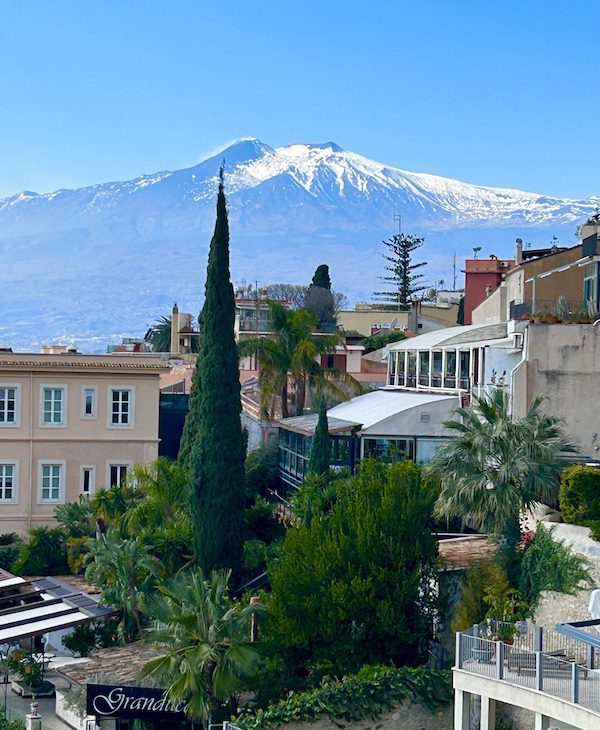
View from Taormina of Mt. Etna / Photo credit Carolyn Ray
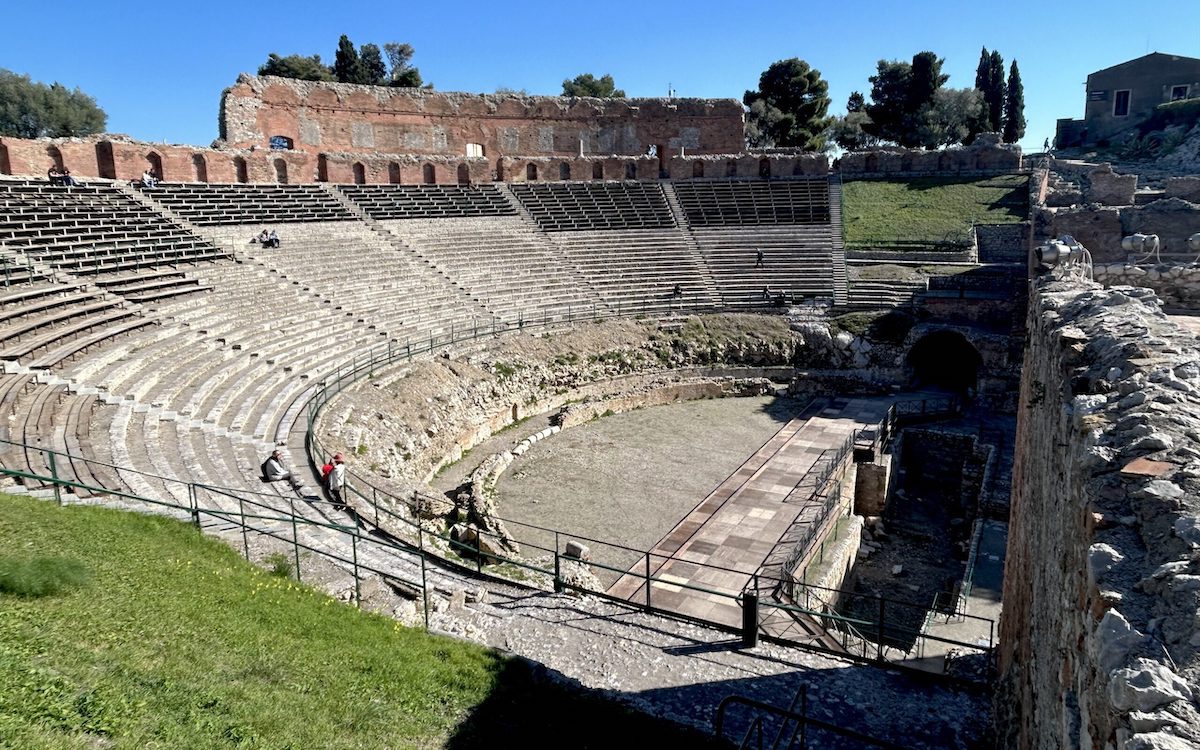
Looking into the ancient Taormina Amphitheatre / Photo by Carolyn Ray
3. Syracuse, where time stands still
This 2,600-year-old town was one of the most powerful and wealthy city-states in the Greek world. From these vast limestone quarries rose a city of over 100,00 people, rivalling Athens in the 5th century. Syracuse (or Siracusa in Italian) was also the home of Archimedes, the mathematician and inventor, who created a device for raising water, still used, known as the Archimedes screw. He played an important role in the defense of Syracuse against the siege laid by the Romans in 213 B.C. by constructing war machines so effective that they long delayed the capture of the city. When Syracuse eventually fell to the Roman general Marcus Claudius Marcellus in the autumn of 212 or spring of 211 B.C., Archimedes was killed in the sack of the city.
With 18,000 seats, Syracuse’s Greek Theatre is one of the largest in the world, carved out of limestone rock. According to my guide, the Spanish took both the seats and the stage, leaving it rather empty but still impressive. In the nearby Arena, tigers were brought in from India to Syracuse and gladiators developed a shorter sword, called the ‘gladius’ in the Arena of Augustus. With its standing rocks (the remains of mining), gardens and the incredible acoustics in the Ear of Dionysus, it’s the perfect place for singing — and the film location for several films including Indiana Jones and the Dial of Destiny. According to my guide, Laura, the best time to visit Syracuse is in May and June to avoid the crowds (and the Dolce and Gabbana fashion show.) Find a place to stay here.
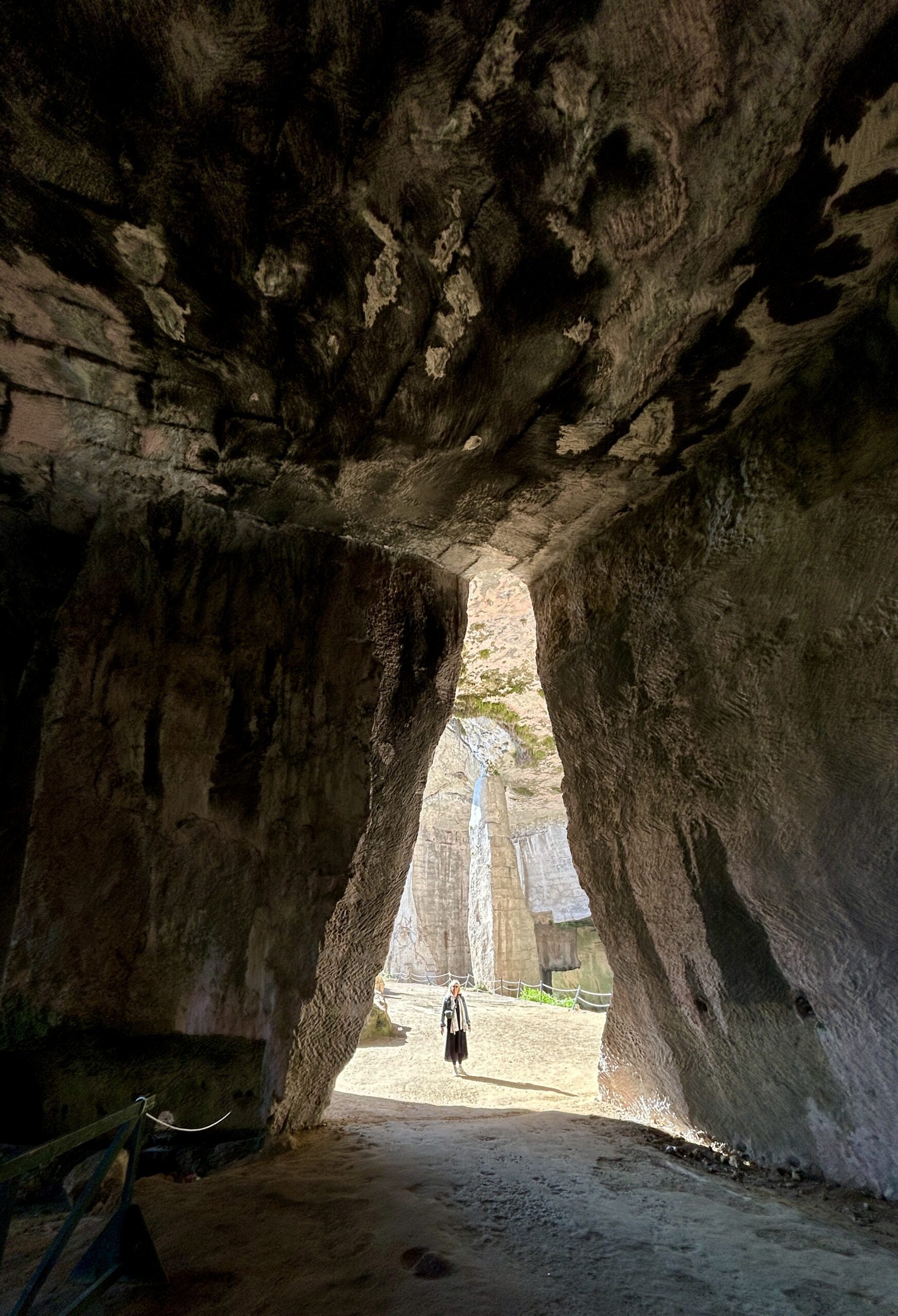
The ear of Archimedes in Syracuse / Photo by Carolyn Ray
4. The Baroque island of Ortigia
Of all the places I visit in this part of Sicily, Ortigia is one I would like to return to, and stay for a while. Jutting out into the island, it’s a walled circular island connected by the Umbertino bridge, that has its own share of history. Here, the patron saint is Lucy, who came to be venerated as the patron of sight and the blind and was depicted by medieval artists carrying a dish containing her eyes. Much like St. Agatha, she refused to be married and was stabbed in the neck at age 21, most likely a victim of the Christian purges carried out under orders of the then Emperor Diocletian.
My guide Laura shows me the Duomo Square, which is one of the most beautiful in all of Italy, with an elegant piazza that stretches in an oval shape. Everywhere there is the dazzling white of alabaster and marble and flanked by grand aristocratic palaces and the magnificent Cathedral. The Cathedral is simply astounding, evidence of all the stages of history in Sicily. Once a temple of Athena in 480 BC, it then became a temple of Minerva, then Byzantine, then Norman, as evidenced by the flooring. It’s still possible to see the Roman columns which were reused for the church.
There’s so much more to see in Ortigia than I had time for, although I did see the sunset on the ocean. According to Laura, the best hotels are the Palace Hotel, the Hotel Roma, and the Grand Hotel des Étrangers. Find a place to stay here.
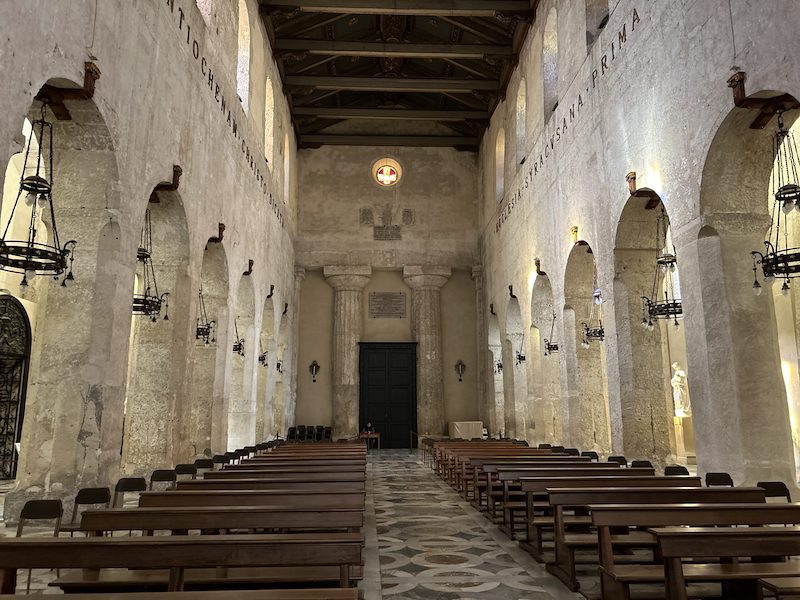
Inside the Ortigia Cathedral / Photo by Carolyn Ray
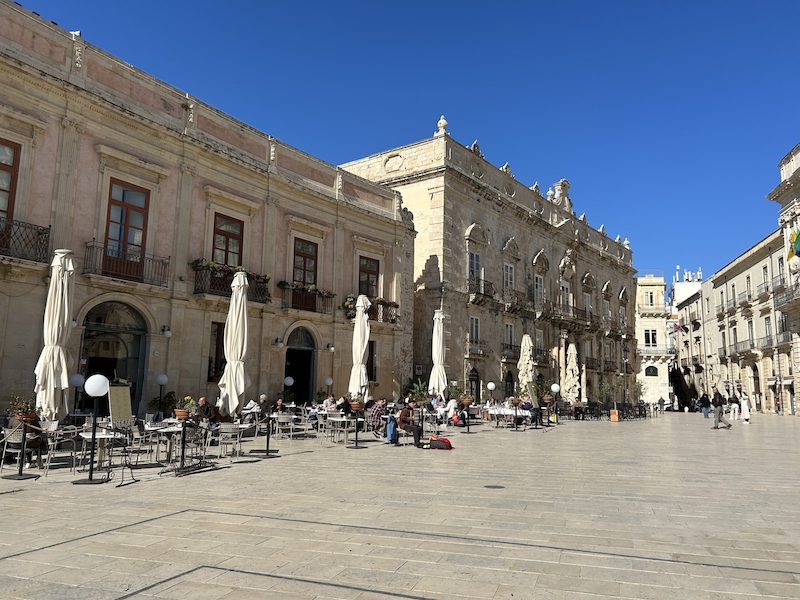
Duomo Square in Ortigia / photo by Carolyn Ray
5. Agrigento, The Valley of the Temples
Once upon a time, a community of 100,000 people overlooked the Mediterranean Sea from a hilltop. Then, and now, there are warm breezes, fragrant almond and pistachio trees, algave gardens and olive trees. With its 11 Greek and Roman temples, Agrigento is the largest archaeological park in Europe, still being uncovered.
Founded as a Greek colony in the 6th century B.C., Agrigento has been a UNESCO World Heritage site since 1998 and one of the most symbolic remains of classical Greek civilization. What is unique about Agrigento is that it is almost as it was thousands of years ago. Altered, yes, changed, but right on the surface, for all to witness. I can just imagine seeing the ships arrive from Africa, Greece and other places around the world. Magical. I can only imagine the Temple of Juno and the grandiose Temple of Concorde at night with a full moon overhead.
There’s not a day that goes by that I don’t realize how fortunate I am to see these sacred places, and with more to see in Sicily, I hope to return soon.

Temple of Concordia / Photo by Carolyn Ray
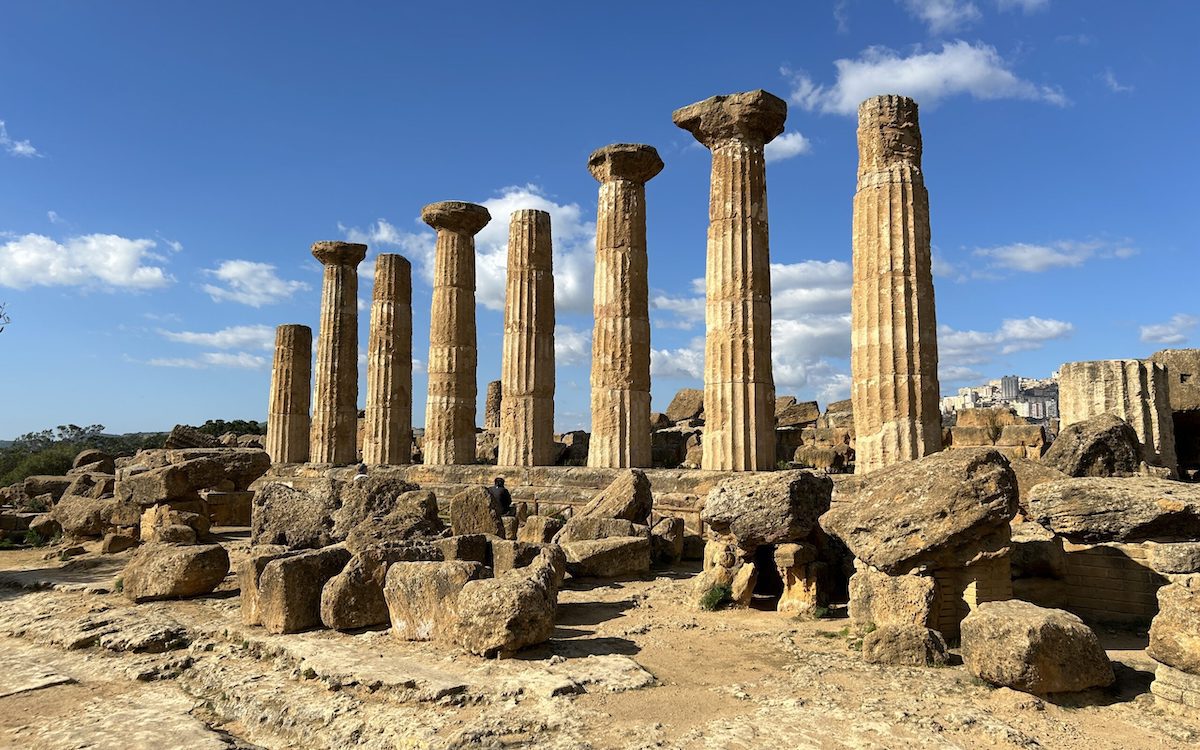
The Temple of Hercules / by Carolyn Ray
Disclaimer: During the holiday season, I travelled at my own expense, although Angela Mancuso of Sicily by Experts assisted me with my itinerary in Sicily, for which I paid a discounted fee. I highly recommend Angela if you’re planning your own travels there, whether solo, in a group or need a custom itinerary.
How to get to Catania, Sicily
There are regular flights into Catania. Check flights here. Renting a car is also an option. Find a rental car here. Once you’re there, it’s easy to take the train for day trips or use a local guide. Find train tickets on Trainline here.
Read More about Italy
Where to Stay in Rome, Italy: Recommendations From Solo Women
Women share their top choices on where to stay in Rome, Italy, including hotels, hostels, and affordable options across the city.
Will Travel for Food: Food Tours for Solo Women
Not only do food tours give insight into a culture, they are a great way for solo women to connect with locals and other travellers.
Seduced by Sicily: How Palermo Captured my Heart
With Middle Eastern, North African, Spanish, Greek and Italian influences, Palermo, Sicily, is one of those places that captures your heart.

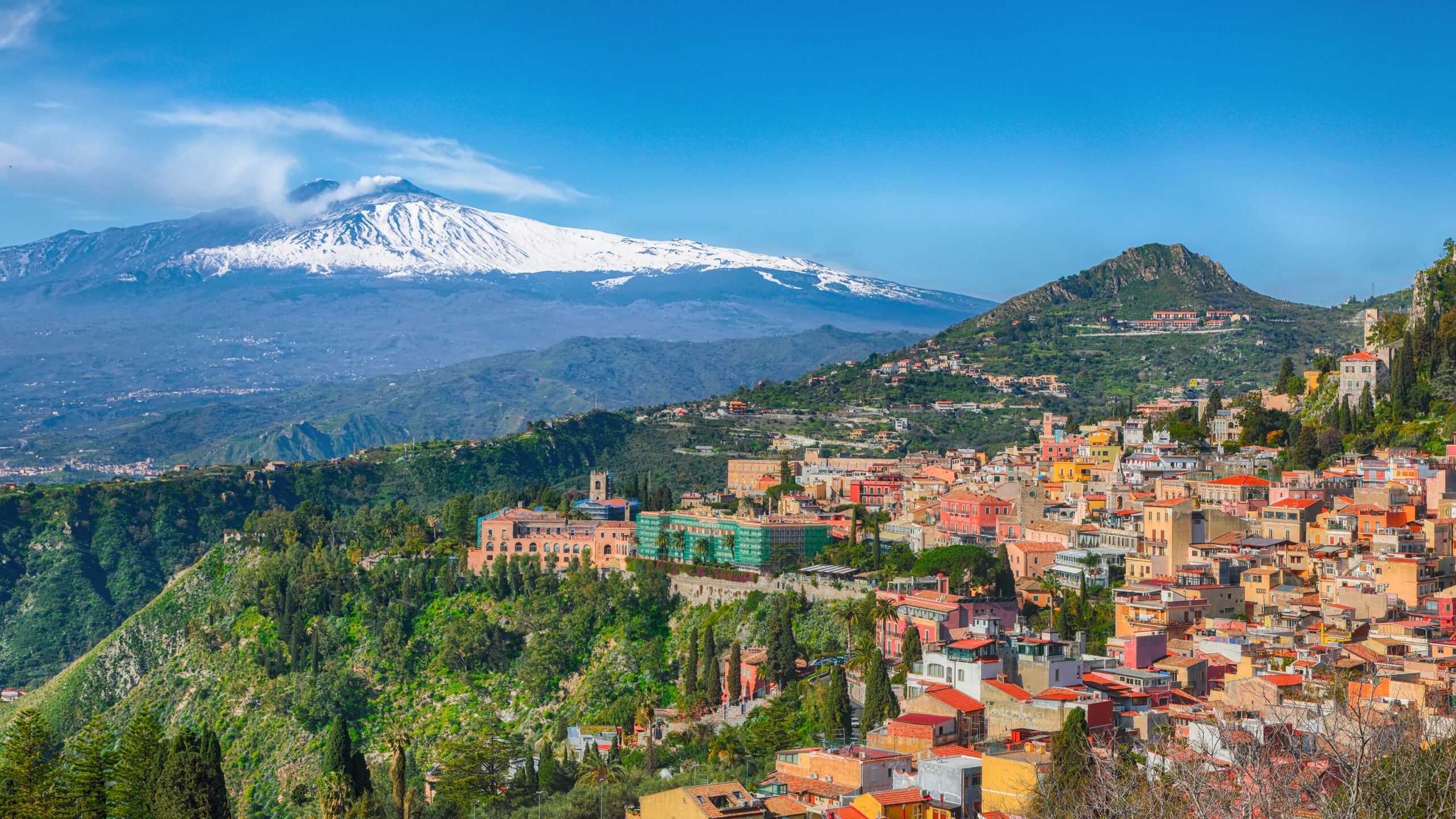




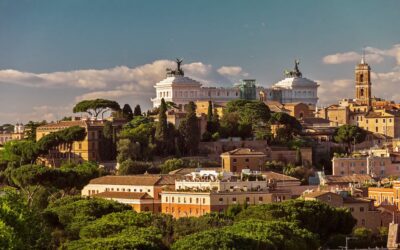

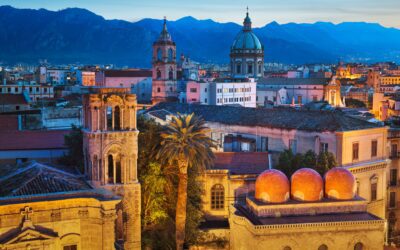
Hi Carolyn, Enjoyed this article, and agree about staying in the more charming Taormina.
I’ve been following you since we met on the Swan Hellenic Red Sea cruise, and will be taking SH cruises next year to Africa (again) to see the Lowland Gorillas this time; and right after, to Belize.
Hope to see you again!